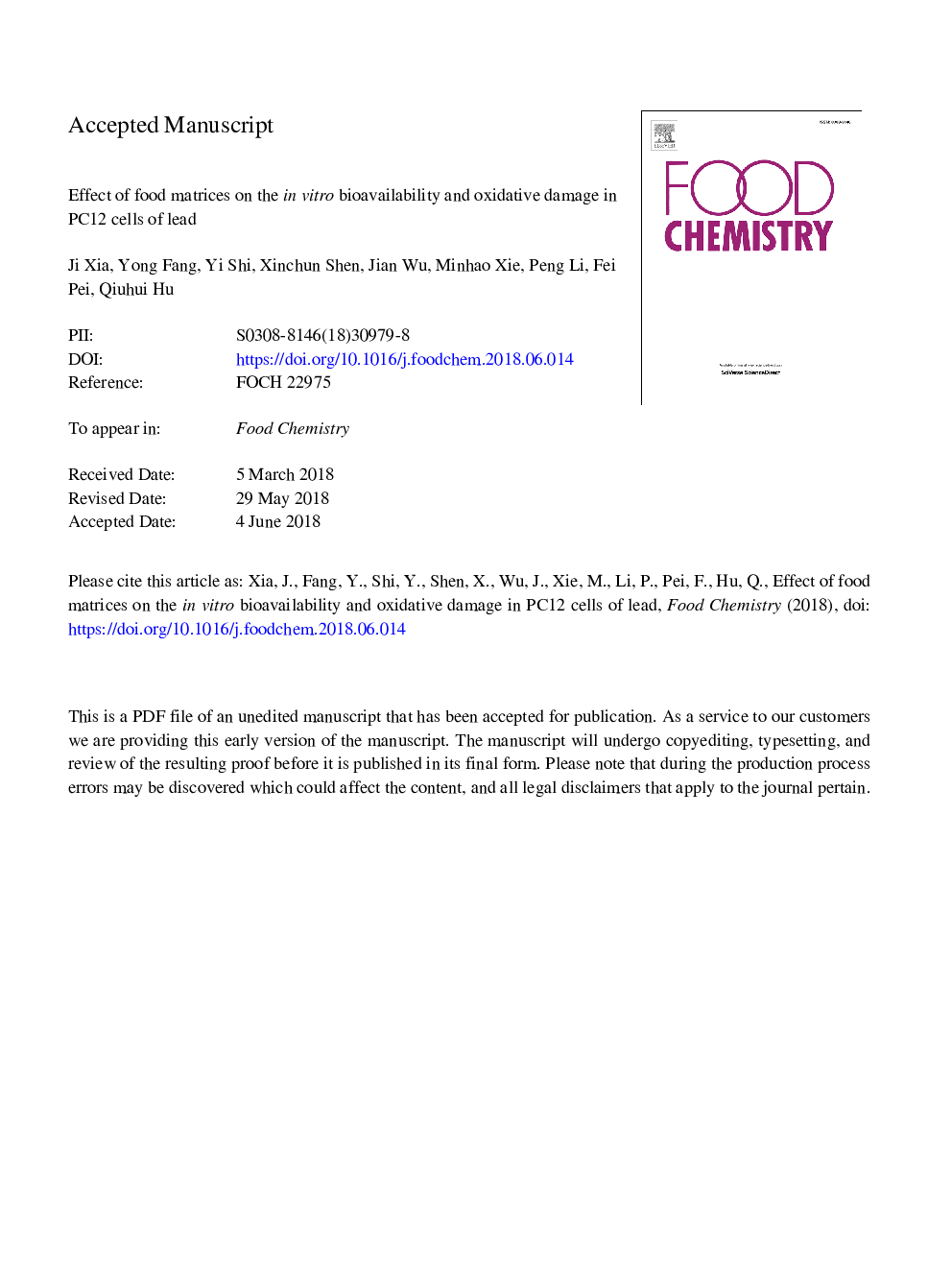| Article ID | Journal | Published Year | Pages | File Type |
|---|---|---|---|---|
| 7584562 | Food Chemistry | 2018 | 32 Pages |
Abstract
The bioavailability and oxidative damage toxicity of lead (Pb) in seven food matrices, including rice, milk, tomato, garlic, apple, kelp and pork, were determined using an in vitro digestion/Caco-2 cell model and a rat pheochromocytoma (PC12) oxidative damage model. Results showed that Pb bioaccessibility and bioavailability in the apple and kelp groups were significantly lower than other food matrix groups, with corresponding values of 11.05-28.31% and 1.57-8.81%, respectively. Oxidative damage assays showed that digestion products of apple polyphenol extract, which was selected from seven food matrices, could increase the oxidation resistance and the levels of glutathione (GSH), superoxide dismutase (SOD), catalase (CAT) and acetyl cholinesterase (AChE) by 32.23%, 39.02%, 27.14% and 30.90%, respectively. Additionally, malondialdehyde (MDA) and reactive oxygen species (ROS) levels could be decreased by 59.66% and 40.21%, respectively. In conclusion, phenolics were an important food matrix that could decrease the bioavailability and oxidative damage of Pb.
Related Topics
Physical Sciences and Engineering
Chemistry
Analytical Chemistry
Authors
Ji Xia, Yong Fang, Yi Shi, Xinchun Shen, Jian Wu, Minhao Xie, Peng Li, Fei Pei, Qiuhui Hu,
